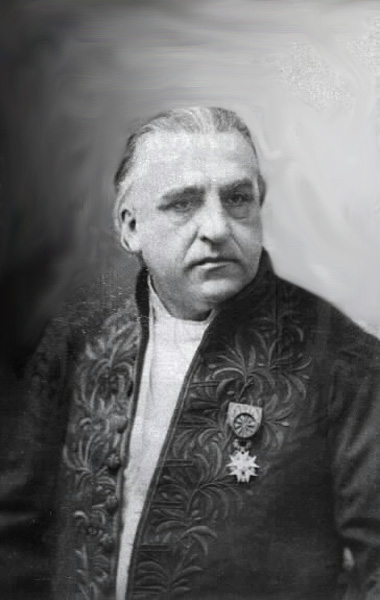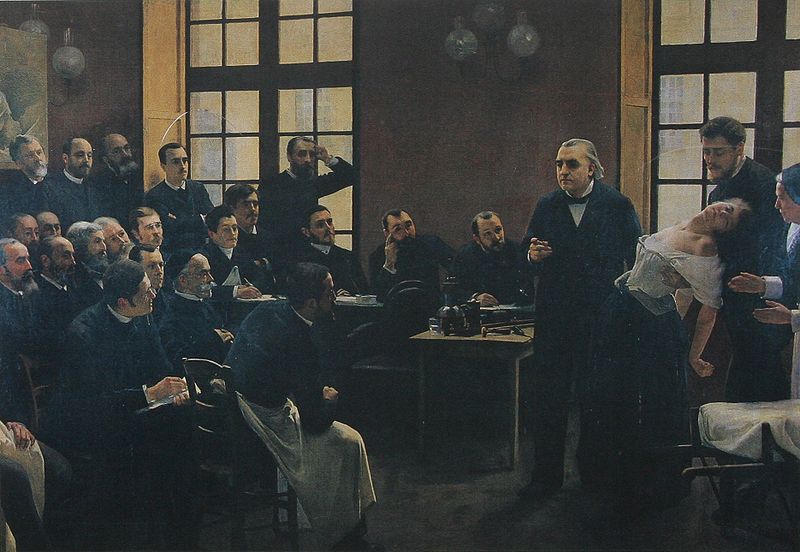<Back to Index>
- Neurologist Jean-Martin Charcot, 1825
- Composer Domenico Gaetano Maria Donizetti, 1797
- Zhengtong and Tianshun Emperor of China Zhu Qizhen, 1427
PAGE SPONSOR


Jean-Martin Charcot (29 November 1825 – 16 August 1893) was a French neurologist and professor of anatomical pathology. He is known as "the founder of modern neurology" and is "associated with at least 15 medical eponyms", including Charcot-Marie-Tooth disease and amyotrophic lateral sclerosis (Lou Gehrig's disease). Charcot has been referred to as "the father of French neurology and one of the world's pioneers of neurology".
His work greatly influenced the developing fields of neurology and psychology. He was the "foremost neurologist of late nineteenth century France" and has been called "the Napoleon of the neuroses". Born in Paris, France, Charcot worked and taught at the famous Salpêtrière Hospital for 33 years. His reputation as an instructor drew students from all over Europe. In 1882, he established a neurology clinic at Salpêtrière, which was the first of its kind in Europe. Charcot was a part of the French neurological tradition and studied under, and greatly revered, Duchenne de Boulogne. Charcot's primary focus was neurology. He named and was the first to describe multiple sclerosis. Summarizing previous reports and adding his own clinical and pathological observations, Charcot called the disease sclerose en plaques. The three signs of Multiple sclerosis now known as Charcot's triad 1 are nystagmus, intention tremor, and telegraphic speech,
though these are not unique to MS. Charcot also observed cognition
changes, describing his patients as having a "marked enfeeblement of
the memory" and "conceptions that formed slowly". He was also the first
to describe a disorder known as Charcot joint or Charcot arthropathy, a degeneration of joint surfaces resulting from loss of proprioception. He researched the functions of different parts of the brain and the role of arteries in cerebral hemorrhage. Charcot was among the first to describe Charcot-Marie-Tooth disease (CMT). The announcement was made simultaneously with Pierre Marie of France (his resident) and Howard Henry Tooth of England. The disease is also sometimes called peroneal muscular atrophy. Charcot's studies between 1868 and 1881 were a landmark in the understanding of Parkinson's disease. Among other advances he made the distinction between rigidity, weakness and bradykinesia. He also led the disease, which was formerly named paralysis agitans (shaking palsy), to be re-named on behalf of James Parkinson. Charcot is best known today, outside the community of neurologists, for his work on hypnosis and hysteria.
He believed that hysteria was a neurological disorder for which
patients were pre-disposed by hereditary features of their nervous
system. Charcot's
interest in hysteria and hypnotism "developed at a time when the
general public was fascinated in 'animal magnetism' and mesmerization' ... Charcot and his school considered the ability to be hypnotized as a
clinical feature of hysteria ... For the members of the
Salpêtrière School, susceptibility to hypnotism was
synonymous with disease, i.e. hysteria, although they later recognized ... that grand hypnotisme (in hysterics) should be differentiated from petit hypnotisme, which corresponded to the hypnosis of ordinary people". The Salpêtrière School's position on hypnosis were sharply criticized by Hippolyte Bernheim, a leading neurologist of the time. Charcot
himself long had concerns about the use of hypnosis in treatment and
about its effect on patients. He also was concerned that the
sensationalism hypnosis attracted had robbed it of its scientific
interest, and that the quarrel with Bernheim, furthered mostly by his pupil Georges Gilles de la Tourette, had "damaged" hypnotism. "He married a rich widow, Madame Durvis, in 1862 and had two children, Jeanne and Jean-Baptiste, the latter becoming both a doctor and a famous polar explorer". Charcot's name is associated with many diseases and conditions including: Charcot's artery (lenticulostriate artery); Charcot's joint (diabetic arthropathy); Charcot's disease (amyotrophic lateral sclerosis, the most common subtype of motor neurone disease- also known as Lou Gehrig's disease; Charcot-Marie-Tooth disease (peroneal muscular atrophy); Charcot Wilbrand syndrome (visual agnosia and loss of ability to revisualise images); Charcot's intermittent hepatic fever (intermittent pain, intermittent fever, intermittent jaundice, and loss of weight); Charcot - Bouchard aneurysms (tiny aneurysms of the penetrating branches of middle cerebral artery in hypertensives); Charcot's triad; Charcot arthropathy; Charcot - Leyden crystals due to eosinophils white blood cells lysis in cases of allergic diseases. One
of Charcot's greatest legacies as a clinician is his contribution to
the development of systematic neurological examination, correlating a
set of clinical signs with specific lesions. This was made possible by
his pioneering long term studies of patients, coupled with microscopic
and anatomic analysis derived from eventual autopsies. This
led to the first clear delination of various neurological diseases and
classic description of them. For example, amyotrophic lateral sclerosis. Charcot is just as famous for his students: Sigmund Freud, Joseph Babinski, Pierre Janet, William James, Pierre Marie, Albert Londe, Charles-Joseph Bouchard, Georges Gilles de la Tourette, Alfred Binet, and Albert Pitres. Charcot bestowed the eponym for Tourette syndrome in honor of his student, Georges Gilles de la Tourette. Although
by the 1870s, Charcot was France's best known physician, according to
Edward Shorter, his ideas in psychiatry were refuted, and France did
not recover for decades. Shorter wrote in his A History of Psychiatry that
Charcot himself understood "almost nothing" about major psychiatric
illness, and that he was "quite lacking in common sense and grandiosely
sure of his own judgement". However, this perspective overlooks that
Charcot never claimed to be practicing psychiatry or to be a
psychiatrist, a field that was separately organized from neurology
within France's educational and public health systems. After his death, the illness "hysteria" that Charcot described was claimed to be nothing more than an "artifact of suggestion". However,
the negative judgment of Charcot's work on hysteria is influenced by a
significant shift in diagnostic criteria and conception of hysteria
which occurred in the decades following his death. The
historical perspective on Charcot's work on hysteria has also been
distorted by viewing him as a precursor of Freud (whose markedly
different conception of hysteria was extensively addressed by feminist
historians in the last decades of the 20th century). In
fact, Charcot argued vehemently against the widespread medical and
popular prejudice that hysteria was rarely found in men. He taught that
due to this prejudice these "cases often went unrecognised, even by
distinguished doctors" and could occur in such models of masculinity as railway engineers or
soldiers. Charcot's analysis, in particular his view of hysteria as an
organic condition which could be caused by trauma, paved the way for
understanding neurological symptoms arising from industrial accident or
war related traumas. Charcot appears, along with Maria Skłodowska-Curie (Madame Curie) and Charcot's patient "Blanche" (Marie Wittman), in Per Olov Enquist's 2004 novel The Book about Blanche and Marie. He also appears in the 2005 novel by Sebastian Faulks, Human Traces, and in Axel Munthe's 1929 autobiographical novel The Story of San Michele. In a letter to theNew York Times Book Review of January 18, 1931, however, Charcot's son wrote that "Dr Munthe never was trained by my father." And in his 2008 biography of Munthe,
Bengt Jangfeldt says that 'Charcot is not mentioned in a single letter
of Axel's out of the hundreds that have been preserved from his Paris
years.' Distorted
views of Charcot as harsh and tyranical have arisen from some sources
that mistakenly identify Munthe as Charcot's assistant and take
Munthe's autobiographical novel as
a factual memoir. In fact, Munthe was just a medical student among
hundreds of others. Munthe's most direct contact with Charcot was when
he helped a young female patient "escape" from a ward of the hospital
and took her into his home. Charcot threatened to advise the police and
ordered that Munthe not be allowed on the wards of the hospital again. Charcot Island in Antarctica was discovered by his son, Jean-Baptiste Charcot, who named the Island in honor of his father.